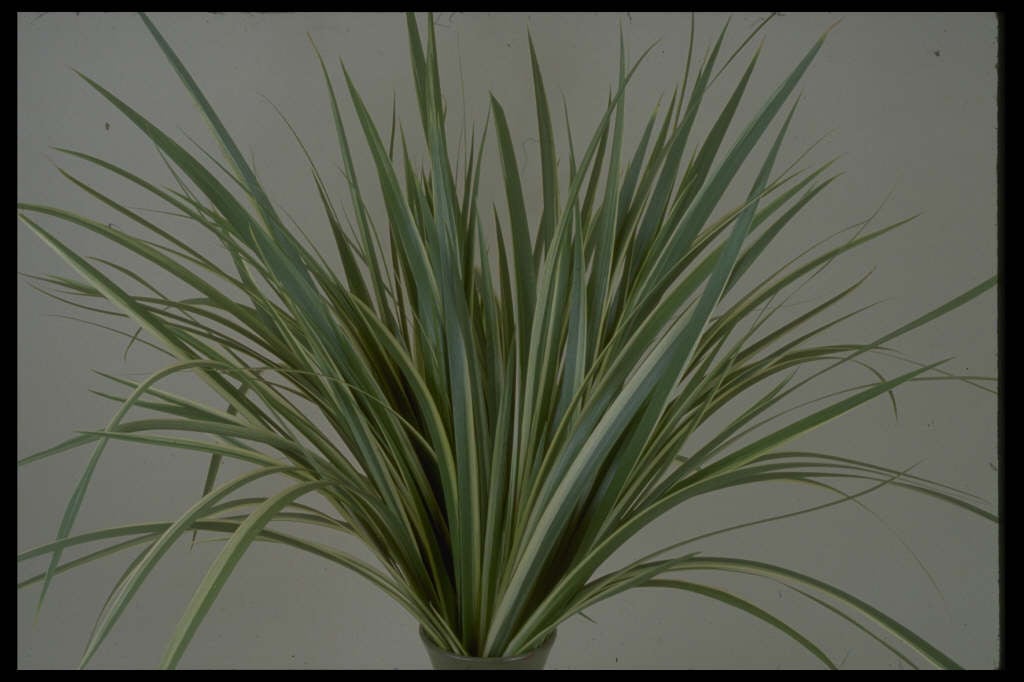Iris foetidissima 'Variegata' (v)
variegated stinking iris
An evergreen perennial to 80cm, with glossy cream-striped leaves and small, yellow-tinged, dull purple flowers, followed by pods opening to show bright orange-red seeds, which persist into winter

Buy this plant
Size
Ultimate height
0.5–1 metresTime to ultimate height
2–5 yearsUltimate spread
0.1–0.5 metresGrowing conditions
Moisture
Moist but well–drained, Poorly–drained, Well–drainedpH
Acid, Alkaline, NeutralColour & scent
| Stem | Flower | Foliage | Fruit | |
| Spring | Cream Green | |||
|---|---|---|---|---|
| Summer | Purple | Cream Green | ||
| Autumn | Cream Green | Orange Red | ||
| Winter | Cream Green |
Position
- Full shade
- Partial shade
Aspect
West–facing or East–facing or North–facing
Exposure
Exposed or Sheltered Hardiness
H6Botanical details
- Family
- Iridaceae
- Native to GB / Ireland
- No
- Foliage
- Evergreen
- Habit
- Clump forming
- Potentially harmful
- Harmful if eaten. Wear gloves and other protective equipment when handling. Pets: Harmful if eaten. For further information and contact numbers regarding pets, see the HTA guide to potentially harmful plants
- Genus
Iris may be rhizomatous or bulbous perennials, with narrow leaves and erect stems bearing flowers with 3 large spreading or pendent fall petals, alternating with 3 erect, often smaller, standard petals, in late winter, spring or early summer
- Name status
Accepted
How to grow
Cultivation
Grow in well-drained, neutral to slightly acid loam but will tolerate most soils in full sun, partial shade or shade
Propagation
Propagate by division of rhizomes from midsummer to early autumn
Suggested planting locations and garden types
- City and courtyard gardens
- Coastal
- Cottage and informal garden
- Flower borders and beds
- Wall side borders
Pruning
Remove any dying foliage in autumn, old flower stems can be cut down after flowering
Pests
Diseases
May be susceptible to aphid-borne viruses, bacterial soft rot and grey moulds; see Iris diseases
Get involved
The Royal Horticultural Society is the UK’s leading gardening charity. We aim to enrich everyone’s life through plants, and make the UK a greener and more beautiful place.